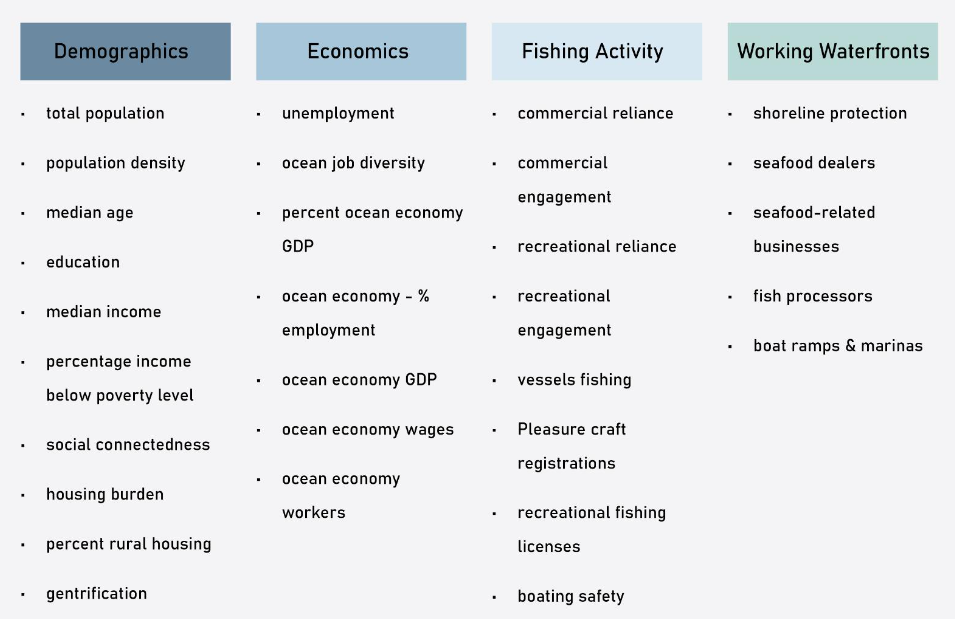
Effective and equitable planning for implementing Aquaculture Opportunity Areas (AOAs) will require consideration of a wide variety of potential impacts, both in waters where AOAs are implemented, and to neighboring coastal communities. A team of researchers from NCCOS and the Gulf Integrated Ecosystem Assessment Program (IEA) have developed a suite of indicators to help track how communities in the Gulf of Mexico might be affected by new offshore aquaculture.
The indicators of the status of the coastal communities potentially affected by AOAs in the Gulf fall into four broad categories: demographics, economics, fishing activity, and working waterfronts. These indicators were chosen based on data availability across the entire Gulf region, importance in past ecosystem assessments in the region, and because they address a component of coastal community well-being (Figure 1).
The team produced a StoryMap and companion geodatabase of indicators chosen to represent the coastal community dynamics potentially affected by AOA designation. The indicators in the geodatabase were collected in 2021, and represent the best available data at the time for the Gulf region.
To ground-truth and validate the project approach and framework, six communities were profiled across Texas, Louisiana and Florida as case studies to best illustrate factors to consider when expanding aquaculture into federal waters. However, the framework is applicable to any Gulf coastal community potentially affected by aquaculture expansion.
Benefit and risk portfolios for communities surrounding AOAs can be developed using these indicators. This information could also contribute to the Environmental Impact Statement of the AOA in the Gulf of Mexico, and could help identify communities that may benefit the most from their development.
DISCLAIMER: Communities profiled in this project do not suggest or indicate AOA site selection. This project is not part of the NEPA planning process and instead represents an independent effort to generate data relevant to aquaculture development in the Gulf of Mexico.
